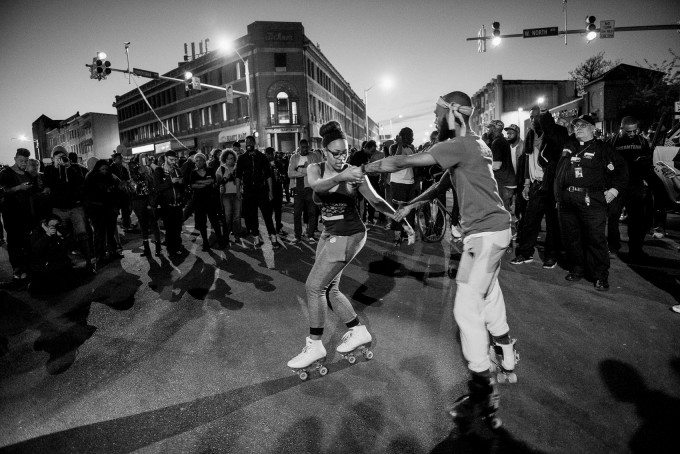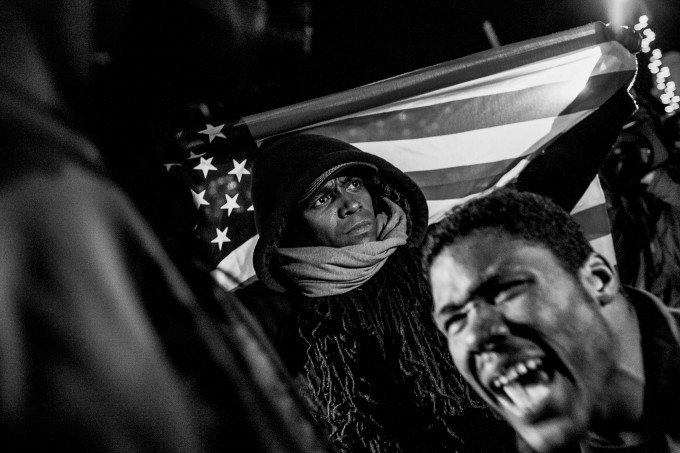
(Andrew Renneisen/Getty Images Reportage)
All images are copyrighted and used with permission by Andrew Renneisen.
Photojournalism is one of the most dynamic professions there is, both creatively and physically. Things can change at a moment’s notice, and you can’t let yourself fall behind. Awareness and an ability to react quickly are crucial to success, and these are qualities that American photojournalist Andrew Renneisen has in spades. He’s a young guy and despite being early in his career, he’s already been published by The New York Times, Los Angeles Times, Rolling Stone and TIME, among others. He’s covered some of the most emotionally heavy stories in recent memory, from the unrest in Ferguson to Eric Garner’s funeral. Here, he shares some of his insights.
Phoblographer: You’ve worked in some of the most serious environments in recent memory, from Eric Garner’s funeral to the unrest in Ferguson, and you’re fairly early in your career. How have you adapted to working in these situations?
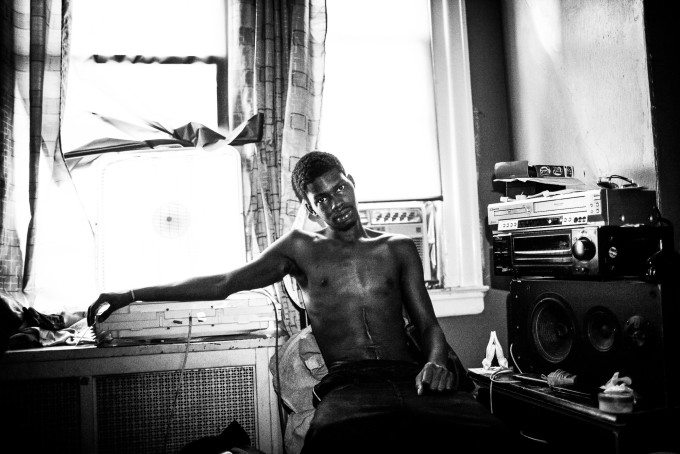
Thanks for having me on your blog Julius, it’s an honor.
I think the most important things in adapting to these situations is learning from those who have covered this type of situation before you. Listening to more experienced photographers and editors has really helped me in working in these types of environments.
Knowing beforehand the type of situation you will be working in is so important. Research and being prepared helps you focus on making the images you want to make, instead of worry about things that could’ve been taken care of prior.
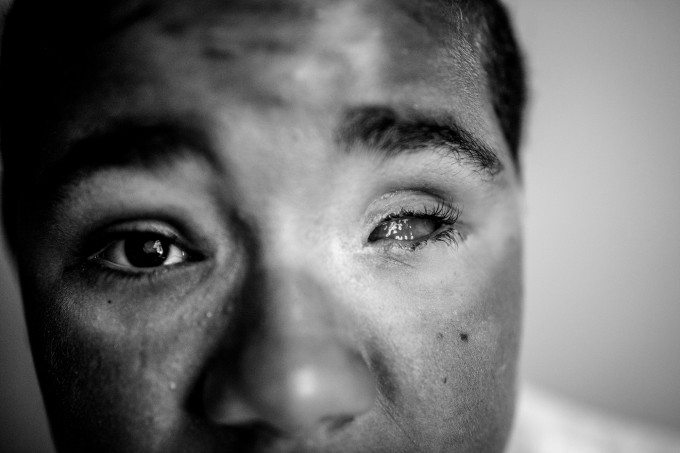
Phoblographer: Your Violent Times series is a harrowing look at the devastating effects of violent crime in the US, and the photographs have such depth and emotional weight that they hold your attention for quite some time. What has it been like working on such an emotionally-involved story like this?
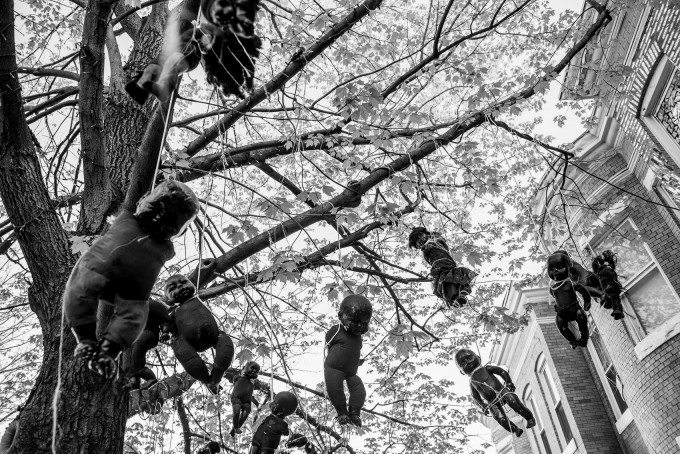
It’s quite difficult at times. You are entering people’s lives at an extremely traumatic and emotional time. Constantly being around tragedy can weigh heavily on one’s mind. I often found myself asking why I was there, or if my pictures were really making a difference.
But, I know if I can make one person look differently at a situation, or inform someone on something terrible that is happening in their own backyard, it was worth the difficulty.
Phoblographer: What is it that drew you to photojournalism as a means of storytelling as opposed to other mediums?
I’m a very visual thinker, and believe visuals can sometimes move people in ways words can not. Documenting a moment of time that will never happen again has always been magical to me. I think that’s what draws me most to this medium.
Photography started for me as a hobby in high school. I loved being around a camera, but I never really took it seriously until I got to college. Once in school, I saw the work of Henri Cartier-Bresson, Robert Capa, Eddie Adams, and Jim Nachtwey. I was super inspired and decided to give a photographic career a shot.
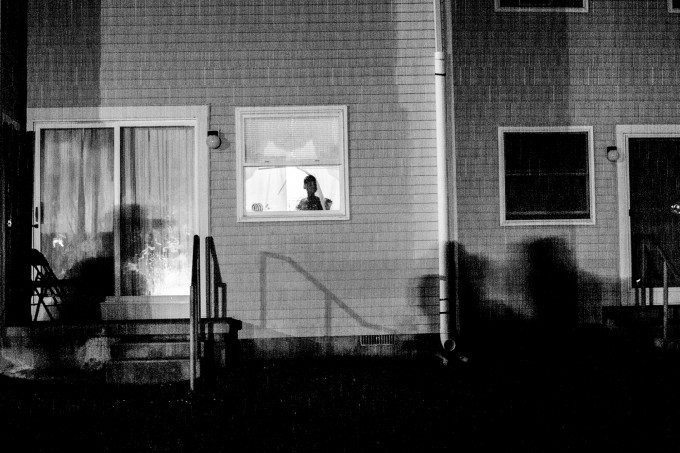
Phoblographer: There are times when you’re trying to make the best of a chaotic situation, and you manage to get the shot, the one you have a feeling will deeply resonate. Has that happened for you, and can you describe one such instance?
I don’t know if I’ve ever managed to get “the shot.” I do know that I’ve been in chaotic situations where I’ve created images that make me feel a certain type of way, and I hope that viewers of my photographs also feel something.
One that particularly stands out is an image from 2013, at the funeral for Alexander Kamara in Wilmington, Delaware. Alexander was 16 years old when he was caught in the crossfire of a shooting on a soccer field on a Sunday afternoon. They had a really big funeral, and there was just so much sadness and emotion everywhere you looked. I made a frame right before his casket was laid to rest that I hope conveys that.
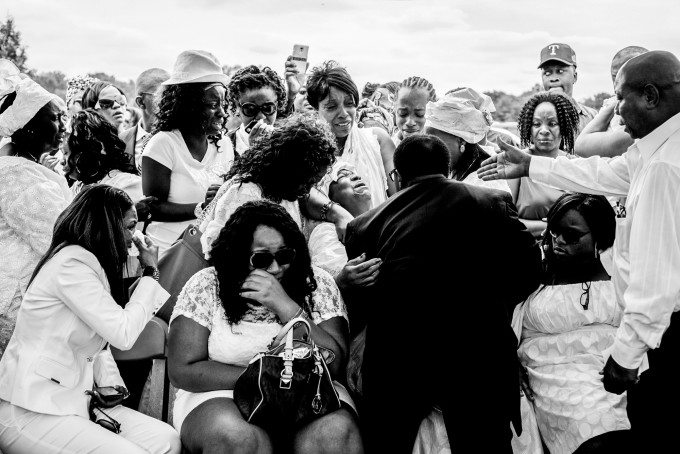
Phoblographer: What’s one of the most important lessons you’ve learned either during school or your career thus far?
I think the most important lesson I’ve learned is to treat everyone with respect. If you are respectful to the people you photograph, the editors that assign and work with your images, and fellow photographers you meet in the field, that respect will go a long way. The photo industry is filled with a community of people that want to help one another succeed. If you treat everyone with respect, respect will most likely come back to you.
Phoblographer: What’s next for you?
Who knows! It’s been such a crazy and amazing journey so far. Things change so fast. For right now, the plan is for me to stay in Brooklyn until February and then possibly relocate to Istanbul in order to pursue international assignments.
